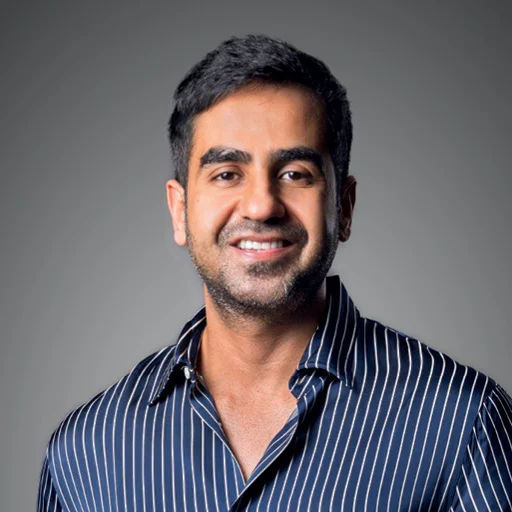‘AI will eat everything’: Figure AI’s Brett Adcock tells Nikhil Kamath how humans and humanoids will co-exist in the next industrial wave
The Figure AI founder predicts a seismic shift that will transform labour, productivity, and even capitalism.

Humanoid robots that can think, move, and learn like humans may soon become as common and as affordable as SUVs, according to Brett Adcock, founder and CEO of prominent robotics startup Figure AI. During a deep-diving conversation with Zerodha co-founder Nikhil Kamath on the latest episode of the WTF Online podcast, Adcock said humanoids will reshape the global economy and redefine the future of work.
“AI systems will eat everything,” Adcock said. “Software ate the world prior to this, and AI will eat software and the rest of the world. The prices of goods and services will slowly start collapsing, basically approaching zero.”
According to Adcock, humanoids, or machines capable of performing nearly every human task, from folding laundry and cooking to working in factories and hospitals, represent the next leap in human productivity. “The humanoid is the ultimate general-purpose machine,” he said, adding that they will eventually coexist alongside billions of humans, powering what he calls the next industrial wave.
Adcock, who previously founded electric aviation company Archer, said building a humanoid robot is one of the most vertically integrated engineering challenges of the modern era. Figure’s proprietary neural network, Helix, enables its humanoids to perform complex dexterous tasks such as handling deformable objects, such as laundry, long considered a “holy grail” problem in robotics. Helix is an advanced AI system that controls the entire upper body of humanoid robots in real time.
Energy efficiency remains a key barrier. “Today, we’re far less efficient than a human,” Adcock admitted. “But humanoids can already perform physical work for nearly a full human shift, making them commercially viable with a positive ROI.”
Voice: The next form factor for AI
When Kamath asked what comes after the smartphone, Adcock was clear: voice will be the next interface. “Voice is the natural UI into artificial super intelligence—whether digital or physical,” he said.
Recommended Stories
He said voice-based AI systems would reach human-level emotional intelligence and context within 12-18 months, redefining how people communicate with machines. Kamath agreed, citing his investment in Nothing, and added, “A lot of large language models are getting democratised, and hardware will be the new differentiation.”
Fleet learning and the data advantage
To overcome the limits of on-board computing, Adcock said Figure AI uses fleet learning, a system that allows all its robots to share and improve from each other’s experiences. “We off-board data from every robot, consolidate it, and train on that,” he explained. Once one robot masters a task, the updated model is pushed across the fleet, creating what he called “an incredible transfer of learning.”
This data feedback loop, Adcock argued, will be the long-term moat for humanoid companies, not the hardware itself.
(INR CR)
Who’s winning the robot race?
Adcock believes the U.S. currently leads in the global humanoid competition, largely due to its strength in AI integration. “There’s a ton of manufacturing capacity in China,” he said, “but the robots they make just don’t work very well. Most are hardware-only bets.”
For Adcock, true leadership depends on three factors: world-class hardware design, cutting-edge AI, and tight system integration. “What matters is shipping a product at scale that can generate data to increase intelligence and reduce cost,” he said. “Who’s the first to a million robots in market—that’s the real milestone.”
On whether he’d trust a humanoid around his children, Adcock was candid. “I would not let my robot roam free for hours and weeks right now with my young kids,” he said. Safety and emotional intelligence, he added, are the next big frontiers.
“The robot will know if you’ve had a tough day based on the sound of your voice,” he said, describing a future where humanoids are not just efficient, but empathetic companions.
When Kamath asked what happens to society when robots do all human work, Adcock predicted a seismic shift: “Once synthetic agents can do everything humans can, the crisis won’t be economic—it’ll be existential.”
He foresees a world of radical material abundance, where the marginal cost of most goods and services approaches zero, forcing a redefinition of capitalism, labor, and purpose. “The metric could shift from GDP per capita to GDP per humanoid,” he quipped.
Where to bet the next dollar
Asked where investors should place their bets, Adcock’s advice was straightforward: “On companies mastering both hardware and AI.”
Humanoids, he believes, will be the largest economic opportunity in history. “The companies that can make robots think and move seamlessly will win,” he said.
